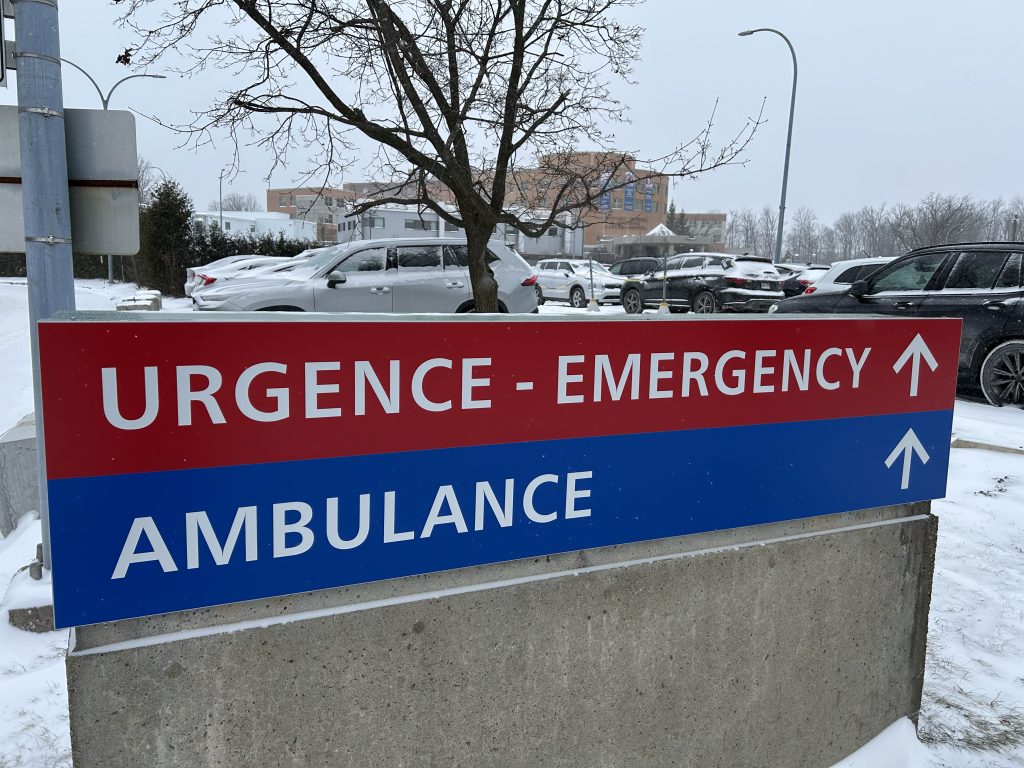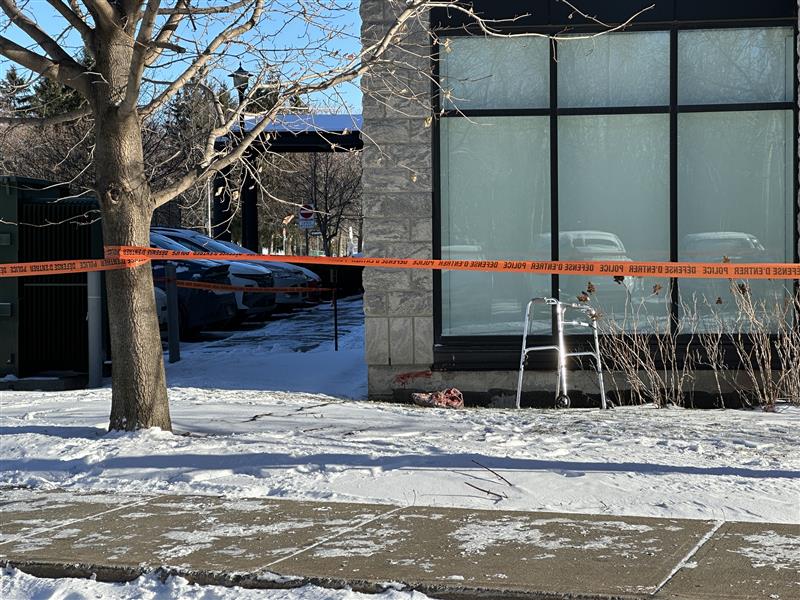Santé Québec: Situation improving even as ERs continue to overflow

Posted January 10, 2025 10:14 am.
Last Updated January 10, 2025 5:15 pm.
Santé Québec, the province’s new crown corporation for the health network, held its first press conference Friday since it came into effect last month.
They provided an update on the situation in hospitals across the province, as some emergency rooms in Montreal grappled with occupancy rates of around 200 per cent. They said the situation is improving modestly.
According to Index Santé, Montreal ERs were seeing an occupancy rate of an average 146 per cent as of 10 a.m. Friday.
Some hospitals grappling with more than 200 per cent of their stretchers occupied. The Jewish General Hospital topped the list at 221 per cent, while the Lakeshore General was at 200 per cent capacity. The Verdun Hospital was not far behind at 196 per cent.
Occupancy rates in several Montreal hospitals have been rising steadily, with values of 200 per cent being seen for many days in a row.
This past Tuesday, more than ten emergency rooms in Quebec recorded a stretcher occupancy rate of 190 per cent and up.

Frédéric Abergel, Executive Vice-President of Operations and Transformation at Santé Québec said they’ve been preparing for the winter season since last summer. “We’re starting to see slight improvements,” he said.
“We know that from Jan. 1, there’s an increase in terms occupancy,” he added. “We’ve all known that for years and this [won’t] disappear right now, but what can we do [so] every year we get even better from last year.”
As for the second indicator closely monitored by Santé Québec, the average length of stay, it decreased by 1.3 hours per patient compared to last year, but still remains at 17.9 hours.
Of the 55 large hospitals with 100 beds or more, nearly two-thirds (63 per cent) of them, or 35, saw an improvement in both indicators, 13 (24 per cent) saw an improvement in one of the two indicators, while seven of them (13 per cent) saw a deterioration in both indicators.
Four of these are located in the greater Montreal area, namely the Montreal General Hospital, the Maisonneuve-Rosemont Hospital, the Santa-Cabrini Hospital and the Cité de la santé de Laval. The other three are the Centre de la Mauricie Hospital, the Hôtel-Dieu de Lévis and the Saint-Jérôme Regional Hospital.
Influenza cases are increasing pressure on ERs — the positivity rate has climbed to 10.7 per cent in the last week, according to the Quebec’s public health institute, the INSPQ. Respiratory syncytial virus (RSV) is seeing a positivity rate of 12.2 per cent, while COVID-19 is at 9.1 per cent.
“It’s the regular season, the respiratory season in the healthcare system but its stretched to its limits,” said Dr. Karl Weiss, chief of infectious diseases and medical microbiology at the Jewish General Hospital, during an interview with CityNews on Wednesday.
He says the situation improved during the holidays when the average stretcher occupancy rate in Quebec was 106 per cent.
Abergel added that there’s been a 24 per cent increase in the availability of primary care appointments.
“We want to move from a crisis situation to an ongoing improvement approach,” he said. “Because every slight improvement in some emergencies might help also other emergencies. It’s not something that we can solve right away just today.”
He says Santé Québec has been preparing for this since July.
“Having the whole Quebec health network prepare six months in advance was a new thing also for us,” he said. “So we are learning from that, in the next few weeks, we will do some kind of lessons learned to make sure that next summer we prepare even better.”
The crisis unit set up a year ago by Quebec Health Minister Christian Dubé is still in place. “We continued the crisis unit with the same people. What is important for us is to move to a mode of recognizing that each establishment has its own reality. It is not true that our solutions work everywhere in Quebec. What we really want is to support our institutions so that they can see their own problems and implement their own solutions.”
Abergel also insisted a lot on the autonomy of hospitals. “There are solutions that work well in certain places where they have been able to identify just a few patients with a particular pathology and who often come to the emergency room, but when we identify them properly and see them in an outpatient clinic or elsewhere, that means a few fewer visits,” he said, giving an example of the strategies that are being implemented.
He says 44 per cent of visits to the ER are not urgent.
“We need to understand why do some patients still go to the ER? Is it because they tried to call their family doctor and it wasn’t available?”
The crown corporation asks Quebecers to avoid ERs in non-urgent cases by calling 811 or going to pharmacies, clinics or CLSCs.
Skeptical union reaction
The president of the union of health care professionals at the CHUM (FIIQ), Nathalie Bélanger, expressed some skepticism about this improvement curve.
Bélanger first clarified that she was speaking strictly for the case of the CHUM, whose geographic location in the heart of downtown imposes on top of everything else the effects of the crisis of homeless people, many of whom are taking refuge in the emergency room to fight the cold.
“It is certain that there are potentially perhaps as many visits and that the length of stay may be a little shorter, but what nurses tell us in real life is not that there is an improvement,” she said.
“Nurses tell us instead that it is difficult to work. There are a lot of assaults, it is not safe. They are overloaded. They are refused to do TS (overtime), they are given additional patients,” she listed.
-With files from The Canadian Press








